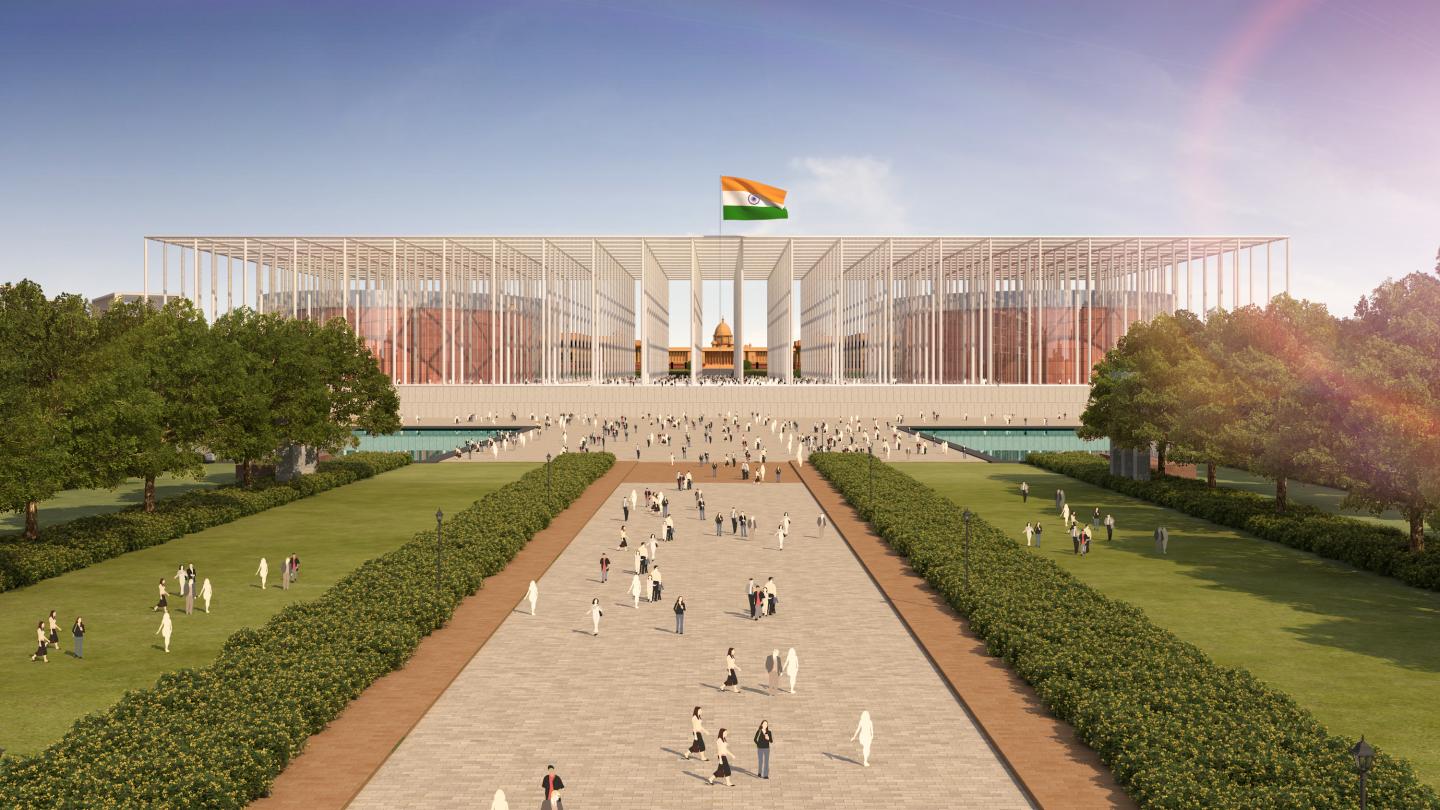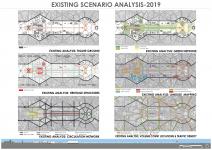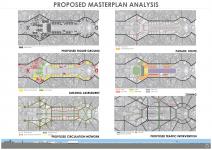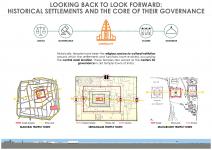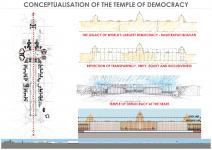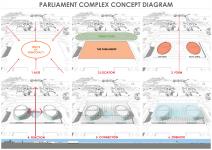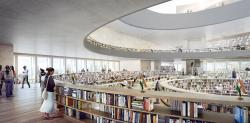The objective of this prestigious project of the Union Government of India, was to revamp the existing parliament building and the surrounding governmental infrastructure along the Rajpath at New Delhi. The proposed masterplan by INI, one of the four finalists shortlisted as part of a three-stage selection procedure through an international bidding process, involved preserving and paraphrasing existing heritage in a contemporary and democratic articulation which renders it ready for future challenges, while representing the values and aspirations of a New India – Good Governance, Efficiency, Transparency, Accountability and Equity and is rooted in the Indian Culture and social milieu.
Reinterpreting a country's heritage and the heart of its democracy entails a profound exploration of architectural innovation, historical preservation, and civic symbolism. Going beyond conventional parameters of urban planning, such an endeavour entails a delicate balance between preserving the rich historical fabric, and envisioning a contemporary narrative that reflects the nation's identity and aspirations. The challenge is to weave the threads of tradition, heritage, and democratic values into a modern planning & architectural tapestry that not only honours the past but also stands as an emblematic beacon of the nation's progress and inclusive governance, encompassing the intangible essence of democracy.
Symbolizing India's transition from colonial rule to a vibrant democracy, the Central Vista project reimagines New Delhi's core, including revamping the existing Parliament building, transforming surrounding governmental infrastructure, and revitalizing the renowned Rajpath and urban realm. It aims to rejuvenate the heart of the capital by establishing resilient, state-of-the-art infrastructure, improve land use efficiency, and foster cohesiveness among ministries. Addressing issues of traffic congestion & pollution, the project showcases technological advancement, offering a visionary blueprint with a holistic, integrated approach to urban infrastructure.
Balancing development, redevelopment, and refurbishment, the Central Vista project emphasizes net zero design, efficient circulation, public interface, security, safety, and smart mobility with minimal disruptions. Design complexities involved contextual, heritage, and sustainability issues while meeting modern functional demands, focusing on aesthetics, image, conservation, and adaptive reuse. Logistical challenges included phasing, transient relocation, non-disruptive demolition, bureaucratic movements, and ceremonial events.
The new Parliament House, envisioned as a “Temple of Democracy”, is designed as two elliptical blocks, housing the Lok Sabha (lower House of Parliament) and Rajya Sabha (upper chambers of Parliament), with the Central Hall serving as a bridge between them. Tall columns, representing the people of India, encircle the blocks, and the transparent, low-e, high-performance glass facade systems and BIPV roof embody the values of transparency and openness in governance.
Intertwining preservation and sustainability, the heritage buildings of the old Parliament, North Block, South Block, and India Centre for Arts, are reprogrammed and preserved as "Museums of Indian Democracy," libraries, and archival spaces. The landscape is enhanced by preserving existing trees and flora while adding new ones, reactivating public spaces by revamping streetscapes and open spaces.
Passive strategies like orientation, compact planning, modular design, are enhanced by active strategies like the use of PV panels, low-e glass, sensors (daylight, CO2 & motion) and district cooling, among others. Water management strategies like percolation wells, rainwater harvesting, and grey water recycling add to the sustainability quotient. Green mobility solutions have been employed by strengthening cycle/ shuttle/ NMT routes. These initiatives create a Net Zero Green Vision, where the Parliament Complex itself is designed as a Net Positive Energy Campus, affirming India's commitment to a greener future.
Reflecting a commitment to democracy, inclusiveness, and sustainability, and placing "People First’, the Central Vista project harmoniously marries India's democratic ideals, cultural heritage and a new-age cognition, creating a transformative landscape that resonates with the nation's vibrant growth and enduring spirit.
2019
Site Area : 919 Acres
Client : Central Public Works Department (CPWD)
Firms / Consultant:
Architecture Firm - INI Design Studio
MEPF Engineering - INI Infrastructure & Engineering
Landscape Consultant - INI Design Studio
Interior Designer - INI Design Studio
Jayesh Hariyani, Adi Mistri, Nikul Shah, Harsh Goel, Saumil Mevada, Rakhi Rupani, Pranav Kumar, Arpan Dalal, Dharmesh Gangani, Dr. Meeta Goel, Bhaumik Patel, Balraj Kshirsagar, Megha Bhatt, Pathik Gandhi, Richa Agrawal, Neha Karode
